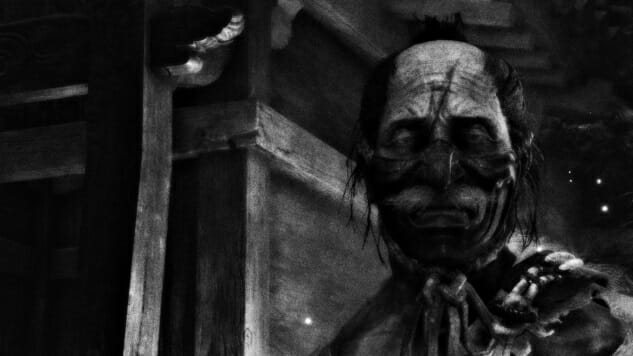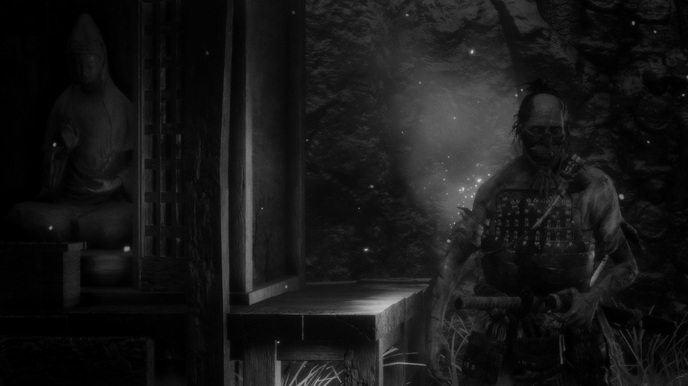Charting Our Emotional Landscapes through Sekiro: Shadows Die Twice’s Hanbei

Warning: Spoilers for Sekiro: Shadows Die Twice.
Hanbei stands alone, in the warm glow of a single torchlight. He cannot die—god knows how many times he’s died—so he waits. Hanbei waits by a shrine. A shrine for forgotten things, things left behind, things that didn’t know they should be missed. Hanbei waits by a shrine that might as well be for him.
Hanbei is apart from society, waiting for someone, anyone, who never knew he existed, to be of use. So he waits alone, because he is possessed by a demon. A terrible centipede, a metaphorization of trauma, that keeps him locked in this eternal state of static decrepitude. It keeps him alive, unable to depart.
From Software is known for it’s lonely, isolating games. Sekiro: Shadow’s Die Twice is no different. Why then do we seek them out? Twist them and probe them exhaustively?
Why do I constantly return to them, over and over. It’s not for answers about the game. It’s for answers about myself.
As players, we look to find ourselves in narrative and characters in these games. Searching for resonance, that someone or something understands psychic spaces we often have difficulty expressing without avatar, surrogate, metaphor. To assuage our anxieties over the complexity of a progressively accelerating and dividing modernity, we vainly attempt to problem solve the fractured, redacted From Software worlds. We make videos, discuss themes and share theories on forums, twitter, and even sometimes in person.
We hunt for psycho-spiritual ligature in these hollowed out digital people. Pulling meat from our own bodies to fit into the gaps in their bones.
Hanbei’s feet are dirty, his skin grey and weathered. Most of his armor has been stripped and lost. Only his menpo remains, obscuring his mouth.
I see the deep gouges on Hanbei’s forearms. Angry valleys of self-injury by proxy. They tell the story of a life in service to others, his traumas and persistence. A continual retraumatization he has consensually invited, a repetition of his earlier life in service, the trauma of his original death, and maybe that of others. He has skills, capabilities, an understanding. But it is his traumas that lock him in this state of compulsive service to others. And maybe, just maybe, one day he’ll achieve some degree of mastery over these events, because, for all their darkness, From Software games give us glimmers of a kind of hope—weak rays of filtered sunlight peeking through cloud cover.
Hanbei, swallowed on all sides by bamboo and rock, is physically near, but to truly reach him is to cross oceans. To know him is to bind ourselves to his geography. This is how From Software characters exist, why even the most seemingly repellent inure themselves to us, why they persist in our memories. They are symbols for self-divination. We spool out our tragedies and hopes and our needs, and bind these characters up into our own narratives. Packages of clipped dialogue, redacted plot beats, and psychic mess. In doing so, we create an amalgamation of others’ designs and our personal experience.


